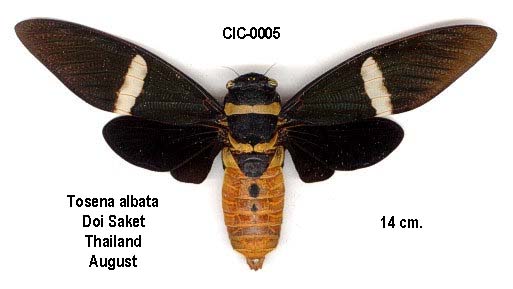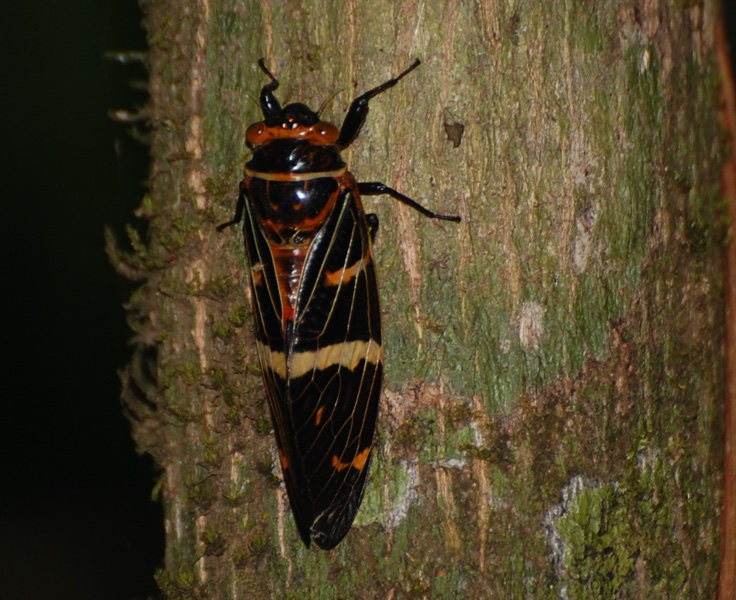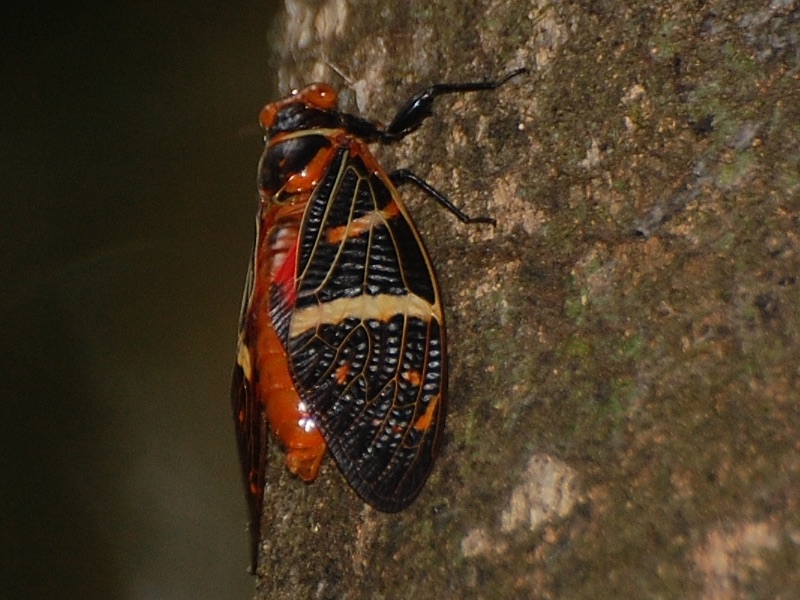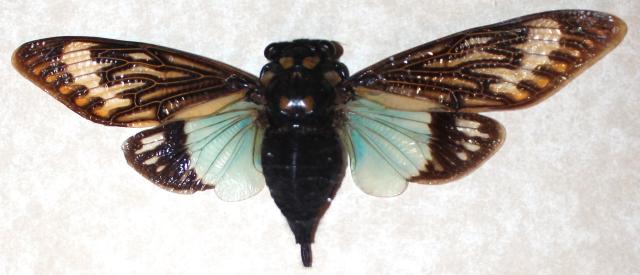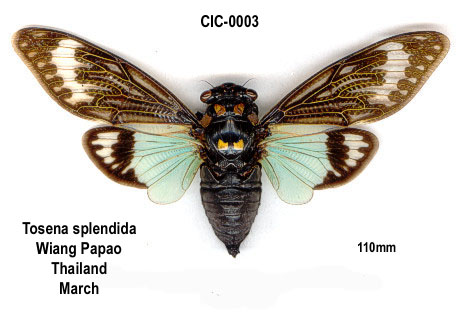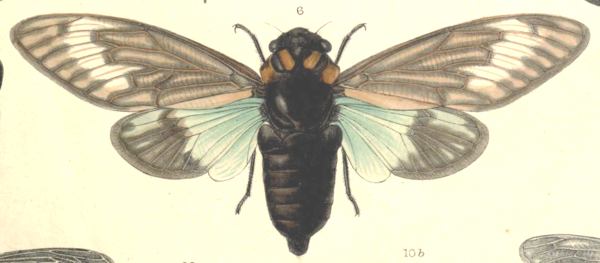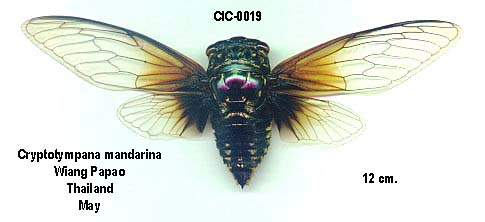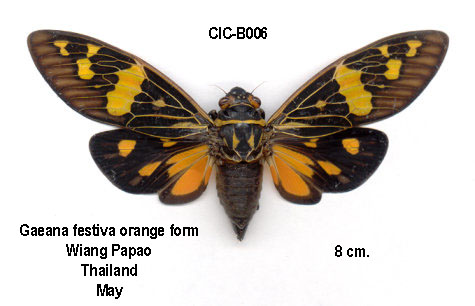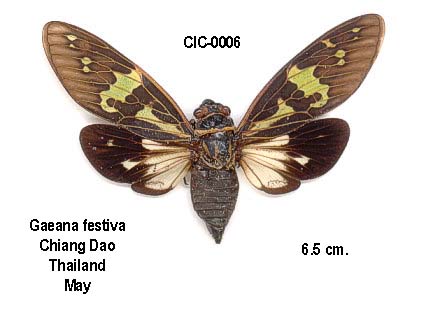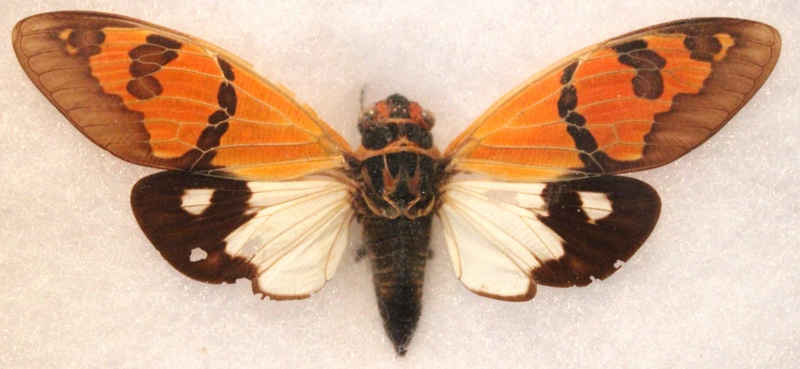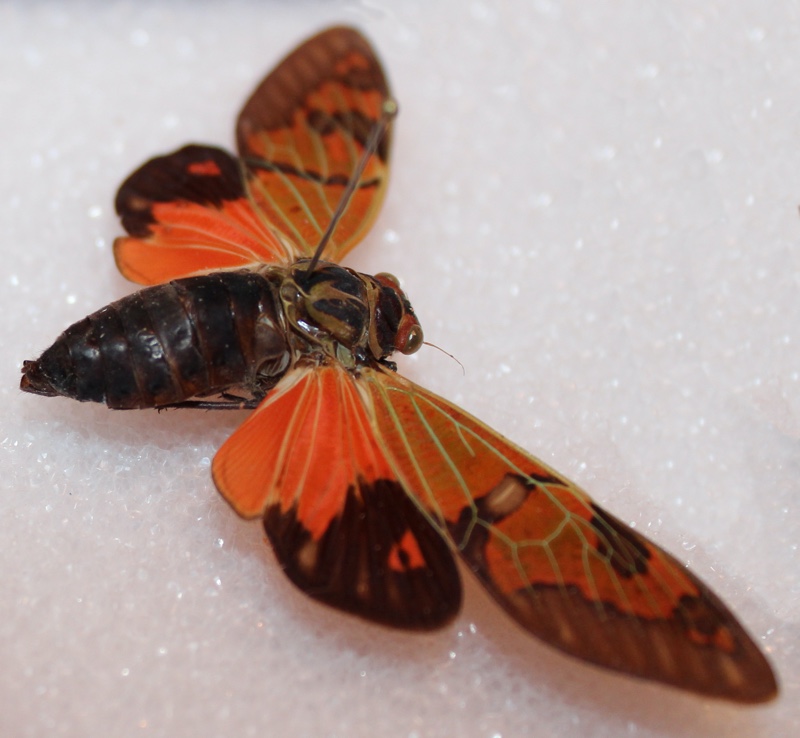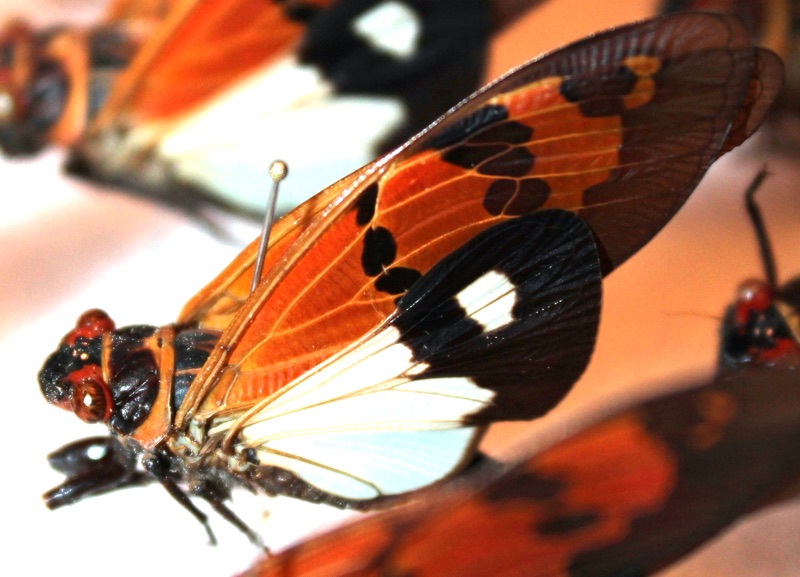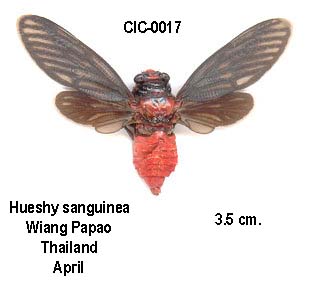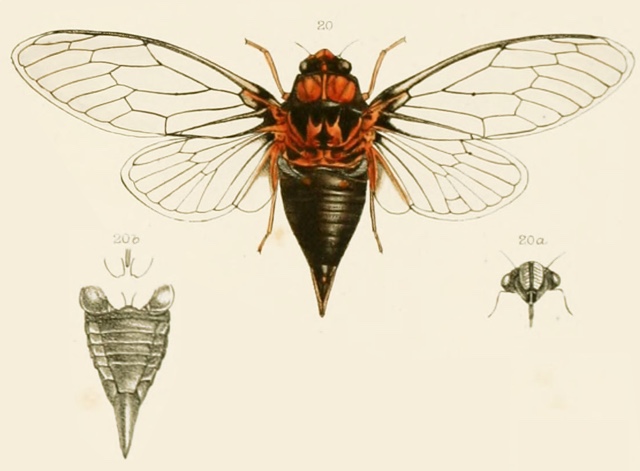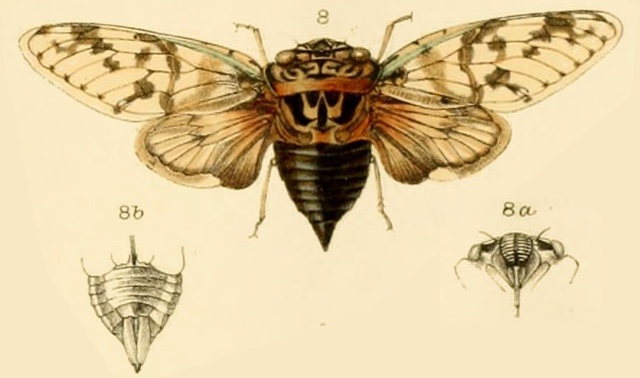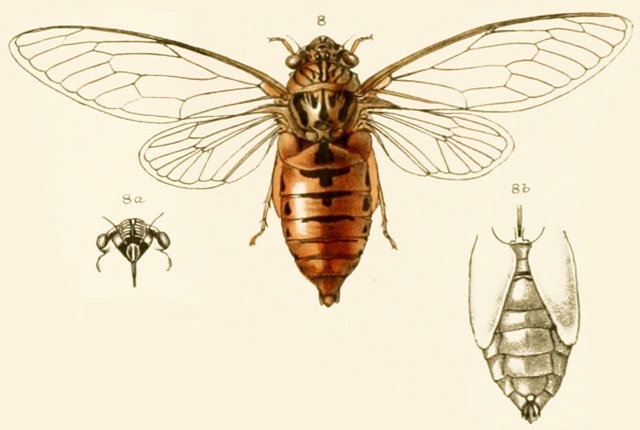Sulphogaeana sulphurea is a cicada found in Bangladesh, Bhutan, China, India, and Nepal. Is was formerly known as Gaeana sulphurea. It is one of the cicadas known as “butterfly cicadas” because of their colorful wings. Sulphogaeana sulphurea are yellow like the mineral sulfur.
Photo by Jeff Blincow:
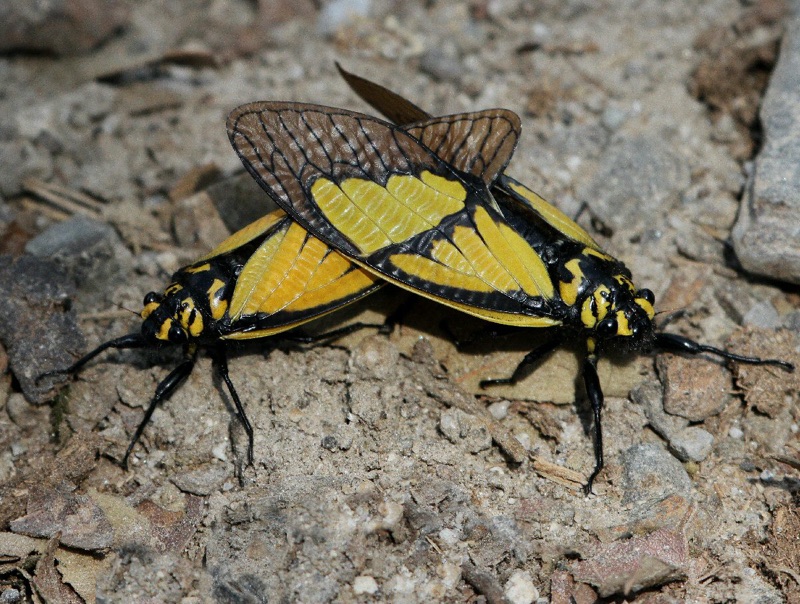
Description:
Male. Body above black; lateral margins of the vertex of head,— continued to between eyes,— pronotum (excluding the fissures, margins, and a central hour-glass-shaped fascia), four linear spots to mesonotum (sometimes united in pairs), and the margins of the anal appendage, reddish-ochraceous. Body beneath and legs black; a fascia on each side of the face, sternal streaks, a spot at the base of tegmina, posterior segmental margins,- obliterated centrally,— and the anal appendage, ochraceous.
Tegmina and wings sulphureous; tegmina with the inner margin of the costal membrane, a curved and inwardly angulated fascia crossing center, and the whole apical area,— including the upper ulnar area,— blackish; costal membrane ochraceous, postcostal area blackish; wings with the apical area— broadly, and narrowing to anal angle— blackish.
Face with a narrow but distinct central sulcation; the rostrum reaching the posterior coxae.
Long. excl. tegm. Male 35 to 37 milHm. Exp. tegm. 85 to 92 millim.
This is a moderately scarce species, and it seems almost confined to the province of Bengal.
Scientific classification:
Family: Cicadidae
Subfamily: Cicadinae
Tribe: Gaeanini
SubTribe: Gaeanina
Genus: Sulphogaeana
Species: Sulphogaeana sulphurea (Westwood, 1839)
For more information about this cicada, visit Cicadas of India.
References:
- The description and location information comes from A Monograph of Oriental Cicadas by W. L. Distant. 1889-1892. Read it on the Biodiversity Heritage Library website.
- Species name information comes from Allen Sanborn’s Catalogue of the Cicadoidea (Hemiptera: Auchenorrhyncha).
